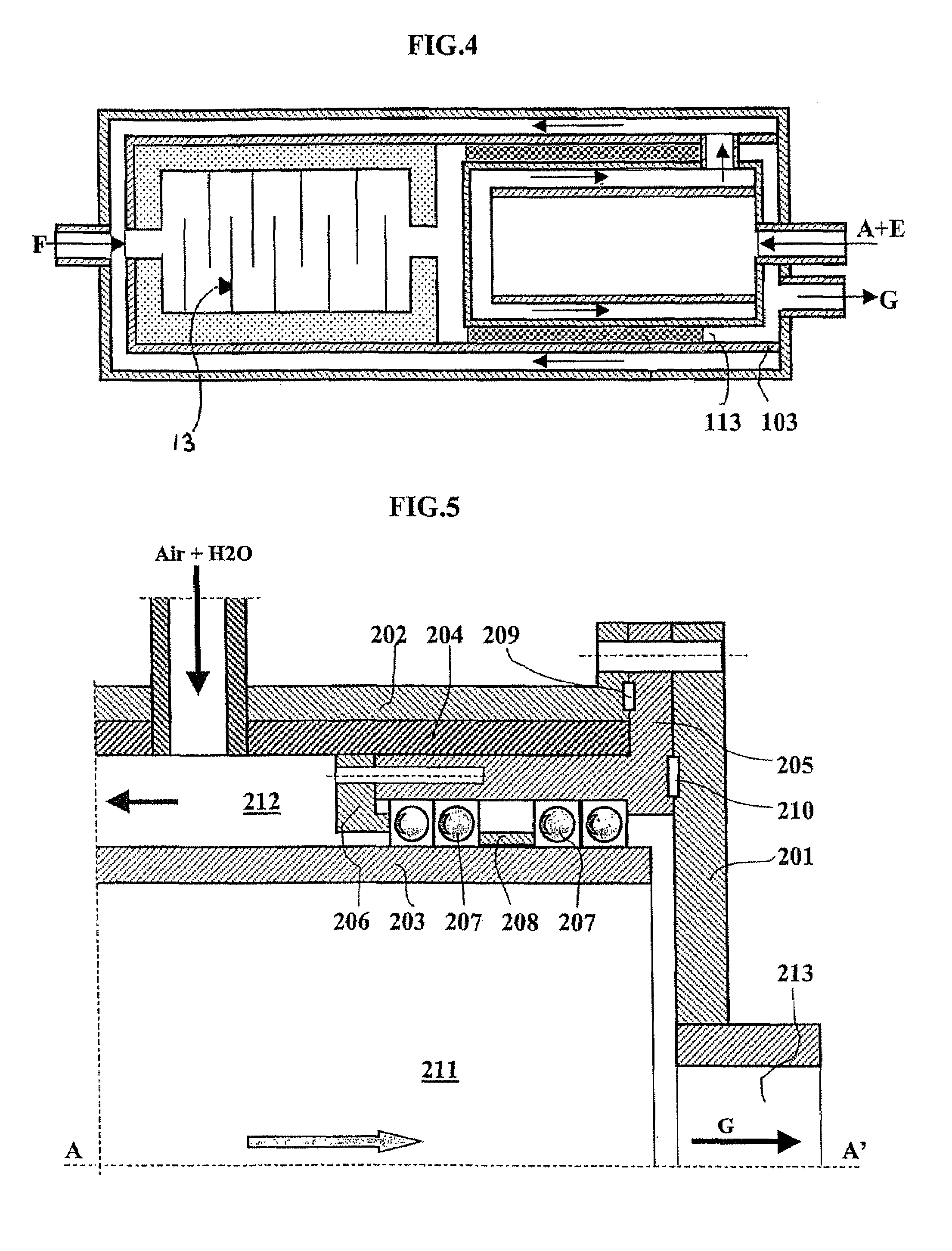Partial oxidation reactor
a reactor and partial oxidation technology, applied in the field of reactors, can solve the problems of limiting the production of soot, imposing very significant limitations on the preheating temperature of air and fuel, and a risk of losing control of the reaction, so as to achieve the effect of increasing the dwell tim
- Summary
- Abstract
- Description
- Claims
- Application Information
AI Technical Summary
Benefits of technology
Problems solved by technology
Method used
Image
Examples
example 2 (
ACCORDING TO THE INVENTION)
[0127]A reactor-exchanger according to FIG. 6 of this invention is supplied by the same amounts of butane, on the one hand, and by a mixture of air and water vapor, on the other hand. The butane is preheated to 450° C. in the same external exchanger as in the preceding example.
[0128]The H2O / C molar ratio is set as in the preceding example at 0.2.
[0129]The temperature for preheating the air and the water vapor results from a heat exchange with the effluents of the reaction zone according to the diagram of FIG. 6.
[0130]The flow rate of air entering via pipe (312) is set so as to reach a temperature of 1600° C. in first reaction chamber (305), and the ratio between the flow rate of entering air and the flow rate of stoichiometric air is 0.34.
[0131]While the heat exchange between the effluents of the reaction and the mixture of air and water vapor has taken place over the entire path (304), (305), (306) and (307), the air-water vapor mixture arrives in first c...
PUM
| Property | Measurement | Unit |
|---|---|---|
| thermal powers | aaaaa | aaaaa |
| thermal powers | aaaaa | aaaaa |
| temperatures | aaaaa | aaaaa |
Abstract
Description
Claims
Application Information
 Login to View More
Login to View More - R&D
- Intellectual Property
- Life Sciences
- Materials
- Tech Scout
- Unparalleled Data Quality
- Higher Quality Content
- 60% Fewer Hallucinations
Browse by: Latest US Patents, China's latest patents, Technical Efficacy Thesaurus, Application Domain, Technology Topic, Popular Technical Reports.
© 2025 PatSnap. All rights reserved.Legal|Privacy policy|Modern Slavery Act Transparency Statement|Sitemap|About US| Contact US: help@patsnap.com



